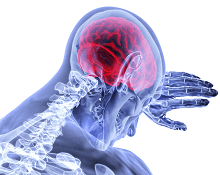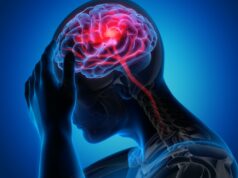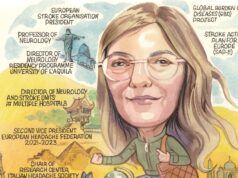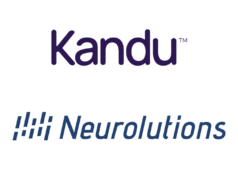 Stroke experts have identified how radiomics—an emerging, image-quantifying technology—can be used to extract biomarkers from clinical brain magnetic resonance imaging (MRI) scans in stroke patients and estimate their relative ‘brain age’. The technique demonstrates that using relative brain age, rather than chronological age, can enhance stroke surveillance and improve predictions around post-stroke recovery, according to a study presented at the European Stroke Organisation Conference (ESOC 2022; 4–6 May, Lyon, France).
Stroke experts have identified how radiomics—an emerging, image-quantifying technology—can be used to extract biomarkers from clinical brain magnetic resonance imaging (MRI) scans in stroke patients and estimate their relative ‘brain age’. The technique demonstrates that using relative brain age, rather than chronological age, can enhance stroke surveillance and improve predictions around post-stroke recovery, according to a study presented at the European Stroke Organisation Conference (ESOC 2022; 4–6 May, Lyon, France).
The study analysed 4,163 ischaemic stroke patients across the USA and Europe. It showed that stroke patients with ‘older-appearing’ brains, characterised by a higher predicted brain age than chronological age, were more likely to suffer from hypertension, diabetes mellitus, or have a history of smoking or prior stroke. Patients with older-appearing brains were also less likely to achieve a favourable post-stroke outcome in comparison with their younger-looking counterparts.
Led by Martin Bretzner (Harvard Medical School, Boston, USA), the research team considered that, while chronological age measures the amount of time a person has lived, it is less likely to precisely capture how ‘well’ a patient has aged. By estimating the age of a patient’s brain, this novel biomarker-based approach provides insight into the resilience of a brain to time and cardiovascular risk factors, and how well patients recover from stroke.
The technique—radiomics—leverages advanced mathematical analysis to explore neuroimaging data available to clinicians, allowing experts to predict patients’ relative brain age compared to other stroke survivors and analyse their overall brain health.
“Age is one of the most influential determinants of post-stroke outcomes, but little is known about the impact of neuroimaging-derived biological brain age,” said Bretzner. “Our results show that quantifying relative brain age in stroke patients can be beneficial in assessing a patient’s brain health globally, and useful in predicting how well the patient will recover from a stroke. It would also be very easy to communicate on this biomarker with clinicians and patients, as everyone instinctively understands the negative implications of an accelerated brain-ageing process.”
In addition, the study found that relative brain age impacted stroke outcomes independently from chronological age and stroke severity. Having previously suffered from a stroke was the most influential clinical factor that impacted relative brain age, followed by diabetes.
“These findings stress the importance of minimising cardiovascular risk factors, and also highlight how cardiovascular health and brain health are tightly intertwined,” added Bretzner. “Identifying potentially modifiable risk factors that impact brain health by using radiomics and relative brain age as a biomarker could lead to the development of stroke prevention interventions, and aid recovery. We hope that this research will serve as a support to identify fragile stroke patients that require more intensive prevention techniques, treatments and surveillance in the future.”












